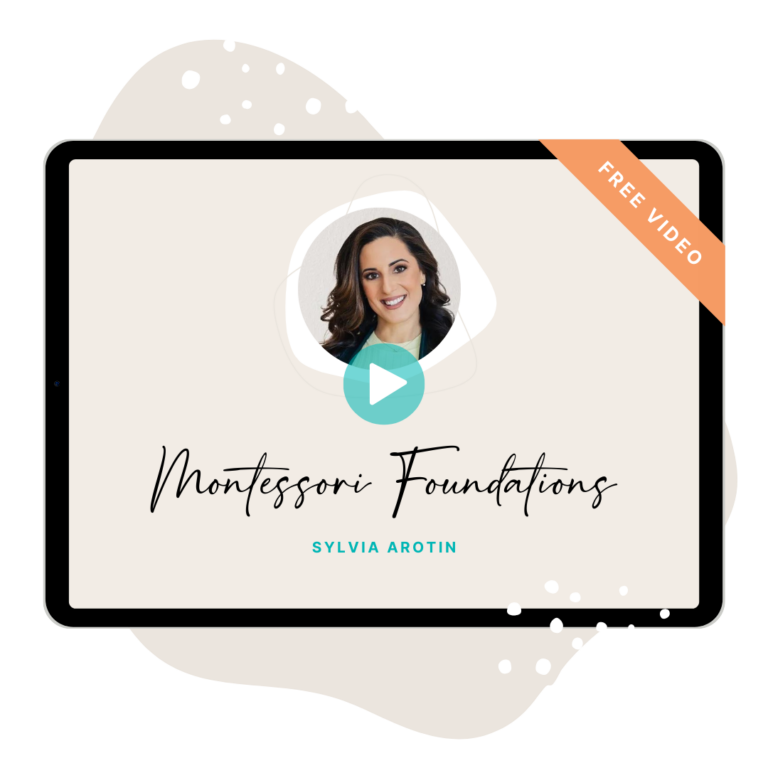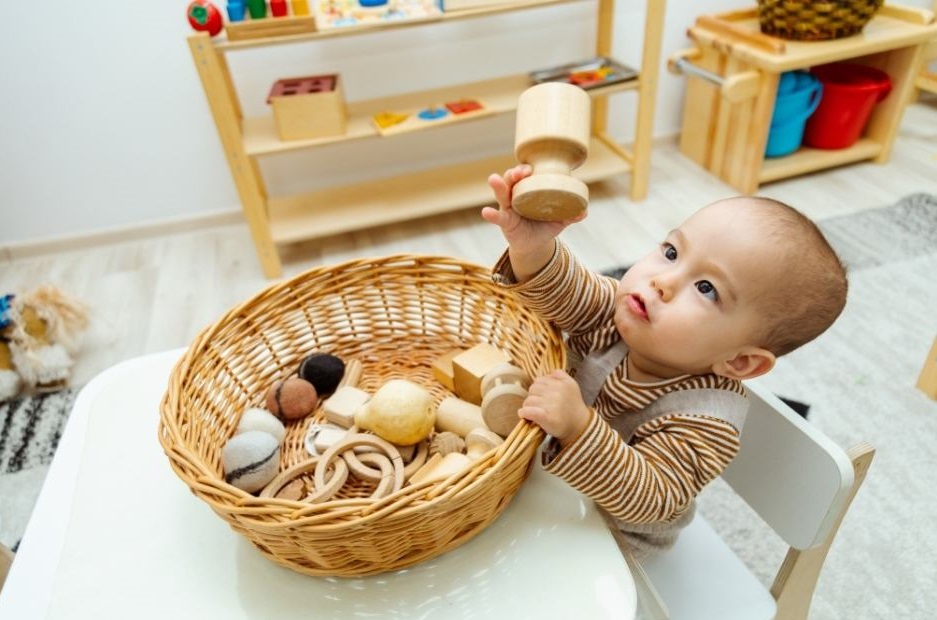The Montessori Method was truly designed for every child. At the beginning of her career, Dr. Montessori dedicated herself to the study of neurodivergent children. Her careful observations led her to develop the Montessori Method, with the intention to teach each child academic skills, life skills, and social skills through the use of scientifically crafted hands-on materials and the practice of real life activities.
The Montessori Method accepts a child’s differences, regardless of their stage of development. Auto-education, one of the foundational principles of Montessori, utilizes proven teaching methods for neurodivergent children such as explicit or direct instruction. The flexibility within the Montessori Method allows the use of a range of tools and techniques to engage the child. The scientifically crafted, sensorial materials are beneficial for neurodivergent children that have sensory sensitivities and are sensory seeking. The sensory input can help a child regulate themselves. By carefully preparing the environment and making small adjustments to daily life, parents and caregivers will be well-equipped to meet their child’s needs with the Montessori way of life.
Here are 7 tips for incorporating Montessori for neurodivergent children:
1. Carefully observe and follow your child
Careful observation will allow you to really understand your child. Pay careful attention to their interests, likes, and dislikes. In order to connect the child to the environment, it is important to have a deep knowledge of who they are. This will allow parents and caregivers to present new lessons to connect the child to activities and materials. If a child has an intense interest in a specific area or areas (such as animals, vehicles, etc.), having this understanding presents an opportunity for you to utilize this interest in their learning.
For the child who might have an intense interest in vehicles, parents and caregivers can use this interest to present new activities. You might try painting with cars, labeling the parts of a car, matching cars by color, and even taking walks through the neighborhood to look for cars.
2. Prepare the environment
Less is more. Often, parents and caregivers become so intrigued by Montessori materials that they want to present as many as possible to their child. When too many options are given to children, shelves may become too crowded. Not only will this minimize the visual appeal and may deter the child from engaging with the activities on the shelf, the sheer number of choices may be overwhelming to the child.
3. Become the prepared adult
Dr. Montessori placed a large emphasis on the importance of preparing oneself as the adult in the environment. Young children often need assistance with coregulation, the process of supporting the child while they attempt to regulate their bodies and their emotions. Neurodivergent children may likely need this support even more and sometimes for extended periods of time. Learning how to keep yourself regulated during these periods of heightened emotion is key. Thinking of your nervous system as their back-up nervous system can help you understand the importance of staying calm; if you are dysregulated, your child will also be dysregulated. Taking time for self-care can help you ground yourself and prepare you for these moments of high emotion when helping your child coregulate.
4. Make changes to the structure of your day
Parents often ask for a daily schedule to implement with their child in the home. Although Dr. Montessori encouraged extended work periods of up to three hours, some children may need alterations to this schedule. Dr. Montessori did recognize the need for movement and breaks, but these accommodations may need to be more frequent for neurodivergent children. For instance, for a child who has a shorter attention span, breaking the activity into small steps that they are able to accomplish can lead to a sense of achievement. For the child who has lots of energy, providing frequent movement breaks will allow them to be more engaged with seated activities.
5. Be open with your child about feelings
Parents and caregivers should model emotional regulation and openness with feelings. Use simple descriptions to ensure your child understands your emotions. You might say, “I feel disappointed when it rains outside and we can’t go to the park,” or “I feel joyful when we all get to eat dinner together as a family.” When your child is experiencing big feelings, acknowledge and validate them. If your child is upset it is time to leave the playground, you might say, “It looks like you are sad it is time to leave the playground. It’s ok to be sad.” This is particularly helpful for children who may have difficulty identifying or expressing emotions. In this way, the Montessori Method allows children to explore uncomfortable feelings freely and easily in a safe space.
6. Understand your child’s sensory needs
It is vital to understand that there are seven sensory needs, not just five as we are often taught. The five most well-known senses include visual (seeing), auditory (hearing), tactile (touch), gustatory (taste), and olfactory (smell), but two additional senses exist, proprioceptive (sensations from muscles and joints) and vestibular (sense of head movement in space). Understanding these seven senses and your child’s individual sensory needs for each will help you find a better method of meeting those needs through the implementation of Montessori principles and materials. Observation is key in identifying these needs and providing activities aligned with these needs.
7. Introduce and incorporate practical life skills regularly
Practical life skills are vital and may be especially important for neurodivergent children who may require explicit instruction in these areas. Learning how to prepare meals, wash dishes, and care for the environment are skills that will be very useful for every child in the future. The slow, deliberate movements and step-by-step introduction of these skills allow them to be easily replicated by the child and help establish executive functioning skills including organization and task completion. Additionally, practical life activities can provide sensory input that can really help regulate a child. For instance, a child who needs extra proprioceptive input will thrive with care of the environment activities including loading and unloading the laundry, moving furniture for sweeping, and cleaning windows.
Explore the fundamentals of Montessori parenting with this free video by Sylvia Arotin, offering insights and strategies to empower and educate your child.
A parent’s account: In the life of a neurodivergent Montessori home
Whether neurodivergent or neurotypical, the Montessori approach will look different for every child because all children are different, but the approach itself remains the same. It doesn’t change because of neurotype. Montessori can work beautifully for all children because at the heart of Montessori is the child.
Currently, we are awaiting an assessment for my little boy. Since realizing he may be Autistic, how I implemented the Montessori approach at home hasn’t really changed.
- Following the child is at the core. This means I follow his interests, needs, and where he is developmentally, then prepare the environment and activities to meet those needs and interests.
- I’ve continued to follow his lead, celebrate his strengths, and set him up for success.
- Respecting the child is another core principle of the Montessori approach, and is hugely important for all children, regardless of neurotype. Understanding your child’s needs, like sensory, communication, psychological needs is vital.
Unfortunately, the world is built for neurotypical people, and neurodivergent people are expected to adapt, but I am very much in support of the thinking that I’d rather try to change the world before trying to change my little boy. And, I think, this is where respect comes in. More acceptance and education surrounding Autism and neurodivergence is needed, so that all of our children can flourish.






